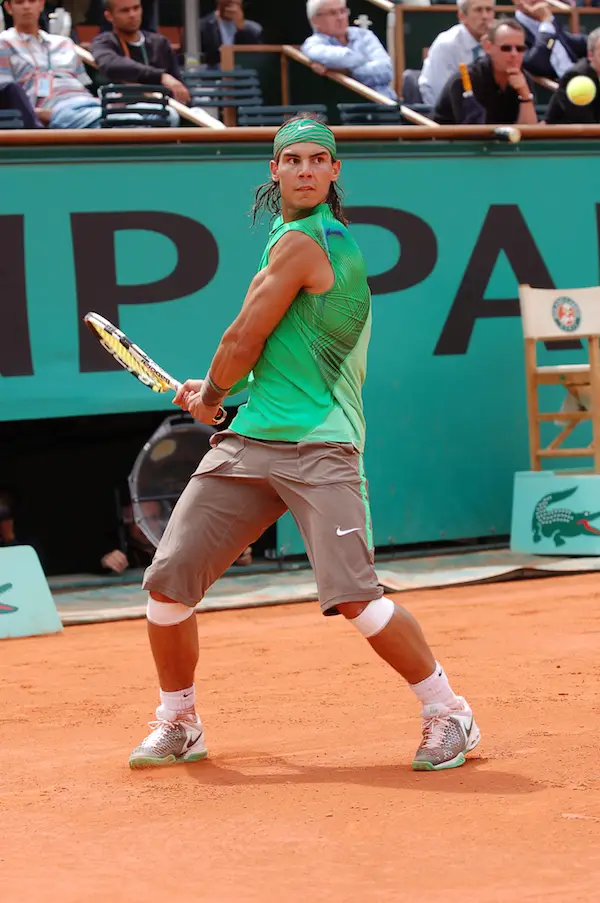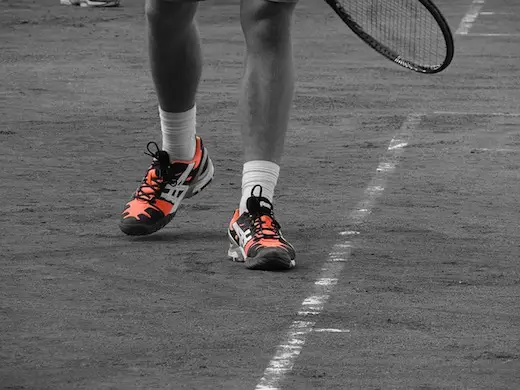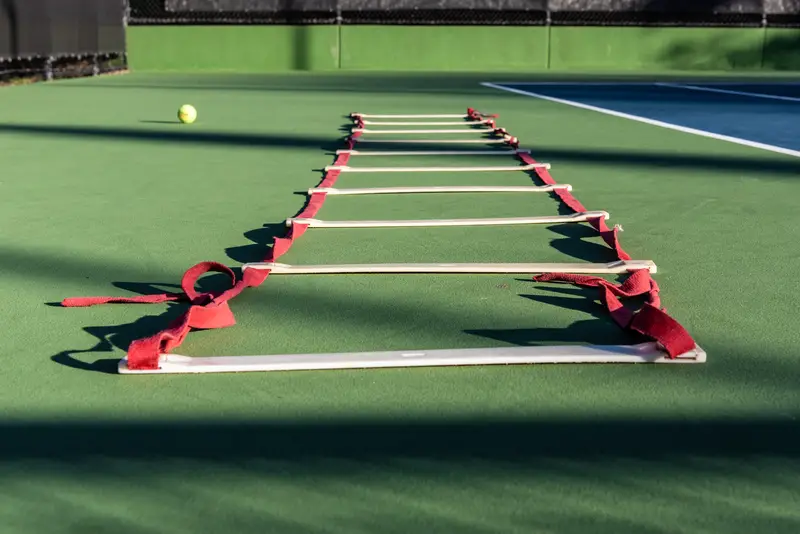- Work the Non-dominant Hand to Control the Ball
- Rotate the Body and Drive With the Legs
- Keep Enough Space Between Your Body and the Ball
Your Guide
 Gavin Davison
Gavin Davison
Before I kick things off, I’d like to stress that the points you see above are just the TIP OF THE ICEBERG.
Hitting a great two-handed backhand is like creating a flawless piece of music – everything has to be in sync for the outcome to be as desired.

While two-handed backhands are more common than one-handers, mainly because they are easier and more consistent to hit, this doesn’t mean that you can IGNORE THE FUNDAMENTALS.
Take Novak Djokovic as an example; his technique isn’t complicated, yet he hits a phenomenal two-handed backhand.
Why?
Because his fundamentals are ABSOLUTELY PERFECT.
He is able to rotate the body through his shot thanks to great footwork.
He works his left hand to generate awesome spin on the ball, and he is rarely crowded when playing the shot.
Check out this slow-mo video of Djokovic hitting backhands at Monte Carlo to see what I mean:
These are all critical boxes that need to be ticked to hit a top-level two-handed backhand.
But rather than simply giving you a few critical points, I’d like to dive deeper and get a little more technical.
A Breakdown of How to Hit a Great Two-Hander
There have been many great two-handed backhands over the years. Guys like Agassi, Djokovic, Nalbandian, Nadal, Medvedev, and Zverev all spring to mind here.
And while they all hit their backhands a little differently from one another, they always performed the basics to a PHENOMENAL LEVEL.
These ‘basics’ are what I’d like to talk about right now.
1) Use the Left Hand to Work Your Spin
Before I continue with this one, I’m talking about right-handed players here.
If you are a left-hander with a two-handed backhand, you would need to work your right hand to generate the required topspin.
But let’s stick with a right-hander for SIMPLICITY.
With a two-handed backhand, you will drive towards the ball with your right hand on the bottom of the grip.
However, contrary to what many beginners think, the spin isn’t created by your right hand.
Instead, the left-hand needs to lag back in order to generate a kind of elastic band effect before rolling over the ball.
In fact, the entire racket head is controlled by the left hand – the right hand is merely there as a guide.
You can even practice generating this topspin with your left hand by simply hitting left-handed forehands.
Believe me, IT WORKS, and your backhand will improve as a result.
2) Drive Through With Both Arms
Like all groundstrokes, it is important that you extend right the way through your shot to generate ENOUGH PACE.
It’s one thing getting a nice degree of topspin with the left hand, but both arms must hit right through the ball and extend towards your target at the same time.
Those that hit a two-handed backhand short usually find that they are doing too much with the left hand and too little on the follow-through.
If you watch a guy like Novak Djokovic or even Serena Williams for that matter, they both drive-through and finish the stroke over their opposing shoulder.
You’ll also notice that both players absolutely throw their body weight through the ball in order to get this extension, with the back leg sometimes coming through in transition too.
3) Keep Your Stance Neutral or Open
The rotation of the body with a two-handed backhand is a little more important than it is with a one-hander.
In case the terminology has thrown you here, a neutral stance is where your right leg is in front of your left (right-hander) facing down the court.
With an open stance backhand, the left leg is ACTUALLY PARALLEL to the right in a horizontal stance.
In all honesty, I prefer to hit from a neutral stance, as this way you can get the bodyweight moving through the ball and get decent rotation too.
Open stance backhands, again, in my opinion, should be reserved for situations in which you are under pressure.
That’s because you don’t have the time to plant your right foot, and if you did, you wouldn’t be able to rotate due to your hips being closed off.
4) Grip Specifics
Although people hold their non-dominant hand in different ways on the grip, the dominant hand is always held in continental.
You can read here if you need a reminder of what this is.
So, first thing’s first, you need to hold your right hand at the bottom of the handle, IDEALLY with a continental grip.
From here, you should place your non-dominant hand above your right hand, with the fingers touching on the grip.
The top parts of your fingers should be nestled on the flat side of the grip, although you can adjust this as you see fit.
The further around your left-hand goes, the more closed your racket face becomes.
This means that you will be setting yourself up to hit more spin on the ball, much like Rafael Nadal DOES.
But if you open up the racket face by sliding the left hand in the other direction, your racket face will approach the ball at a flatter angle. This means you’ll be looking to HIT THE BALL FLAT.
Final Thoughts
At this point, you should have a pretty good idea of the fundamentals for a two-handed backhand, but there is one more thing I’d like to say.
If you are a beginner, or you don’t feel strong enough to play with a one-hander, please, stick with a two-hander.
And while developing your backhand, focus on getting the technique correct and hitting a consistent ball before ramping things up in the power department.
Believe me, you will feel so much more confident on the court by doing things this way.
Do you have any other tips for hitting a great two-handed backhand? Let us know if so!



